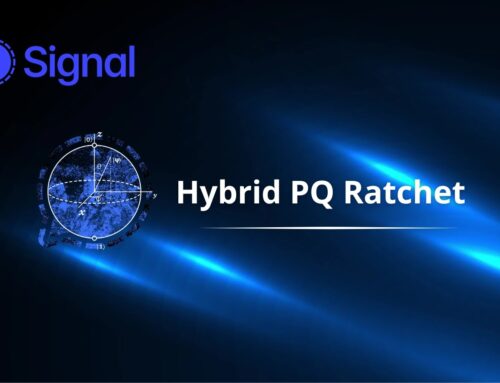
SideWinder Hacker Group Hosting Fake Outlook/Zimbra Portals to Steal Login Credentials
State-sponsored advanced persistent threat (APT) groups constantly evolve their tactics to compromise high-value targets. One such group, APT SideWinder, renowned for its espionage activities across South Asia, has recently escalated its operations with a sophisticated phishing campaign. This campaign leverages meticulously crafted imposters of legitimate Outlook and Zimbra webmail portals to steal critical login credentials from government and military personnel.
SideWinder’s Deceptive Phishing Strategy
Emerging in mid-2024, SideWinder’s latest offensive employs a classic phishing technique with a modern twist. The group is actively hosting fake Outlook and Zimbra login pages on seemingly innocuous free hosting platforms. These include services like Netlify, pages.dev, and workers.dev, chosen likely for their availability, ease of use, and ability to blend in with legitimate traffic, making detection more challenging.
The primary objective is clear: to trick unsuspecting government and military personnel into entering their authentication details into these fake portals. Once entered, these credentials are harvested by SideWinder, granting them unauthorized access to sensitive email accounts and potentially broader network access.
Targeting and Operational Scope
SideWinder’s historical focus on espionage within government and military sectors across South Asia remains consistent. This new campaign specifically tailors its phishing infrastructure to ensnare individuals within these critical target groups. The choice of Outlook and Zimbra is strategic, as these are widely used webmail services within such organizations, increasing the chances of successful compromise.
The use of free hosting services for this operation highlights a common tactic among APTs to maintain a low profile and reduce operational costs while still achieving their objectives. It also presents a challenge for security teams, as these platforms host countless legitimate sites, making it difficult to differentiate malicious activity without deep inspection.
Understanding the Threat: Indicators of Compromise (IoCs)
While specific detailed IoCs for this ongoing campaign haven’t been widely publicized, organizations should be vigilant for certain patterns:
- Suspicious Domains: Look for slightly altered domain names that resemble legitimate Outlook or Zimbra URLs (e.g.,
outlook-web.cominstead ofoutlook.com, or typos likezlmbra.org). - Unexpected Emails: Phishing emails often originate from unusual or unfamiliar senders, contain urgent calls to action, or warn of account issues requiring immediate login.
- Hosting Provider Discrepancies: Legitimate government/military webmail portals are typically hosted on official domains and infrastructure, not public free hosting services.
- Lack of HTTPS or Invalid Certificates: While not a definitive indicator (as some phishing sites use valid certificates), the absence of HTTPS or browser warnings about invalid certificates should be a major red flag.
Remediation Actions and Proactive Defense
Protecting against sophisticated phishing campaigns like SideWinder’s requires a multi-layered approach. Organizations, especially those in government and military sectors, must implement robust security measures and foster a strong security culture.
- Employee Training and Awareness: Conduct regular, up-to-date training on recognizing phishing attempts, identifying suspicious links, and verifying email senders. Emphasize the importance of never entering credentials into unfamiliar sites.
- Multi-Factor Authentication (MFA): Implement strong MFA for all accounts, particularly for email. Even if credentials are stolen, MFA acts as a critical barrier to unauthorized access.
- Email Gateway Security: Deploy advanced email security solutions capable of detecting and blocking phishing emails, zero-day threats, and malicious URLs before they reach user inboxes.
- Domain Name System (DNS) Filtering: Utilize DNS filtering services to block access to known malicious domains and C2 servers.
- Web Application Firewall (WAF): Employ WAFs to protect web applications, including legitimate webmail portals, from common web-based attacks.
- Endpoint Detection and Response (EDR): Implement EDR solutions to monitor endpoints for suspicious activity, detect anomalies, and respond to potential compromises.
- Regular Security Audits: Periodically audit user accounts, access permissions, and network configurations to identify and rectify vulnerabilities.
- Adoption of DMARC, DKIM, and SPF: Implement these email authentication protocols to help prevent email spoofing and ensure the legitimacy of incoming emails.
The Ever-Present Threat of State-Sponsored Espionage
SideWinder’s latest campaign underscores the persistent and evolving threat posed by state-sponsored APTs. Their willingness to adapt tactics, exploit widely used services, and leverage free infrastructure makes them a formidable adversary. The impact of successful espionage, particularly on government and military targets, can range from intelligence gathering to sabotaging operations, making proactive defense paramount.
Organizations must remain vigilant, constantly update their security postures, and educate their workforce to effectively counter these advanced threats. The battle against cyber espionage is ongoing, and a proactive, informed defense is the strongest deterrent.





